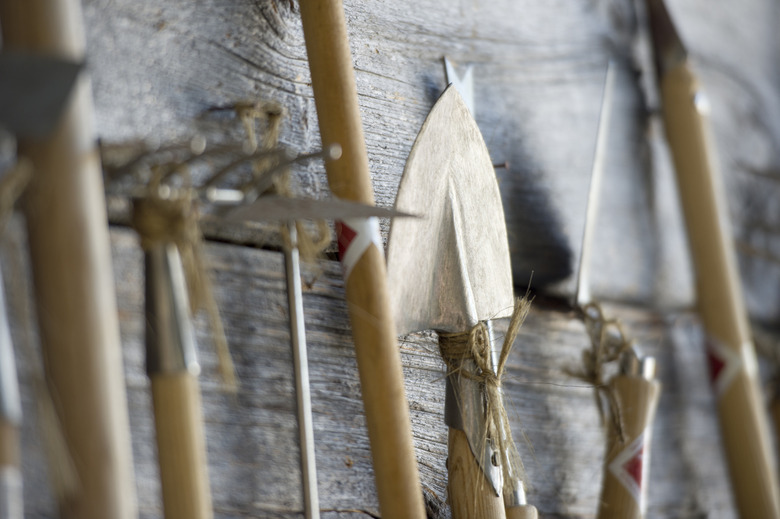Tools That Level The Ground
Your arsenal of lawn and garden equipment is growing, and you need a shed to store it in, or you're finally ready to put up the above-ground pool you've been dreaming about. Whether you want to put in a vegetable garden in that out-of-the-way spot in your backyard, or build a walkway to your front door, the first step before you lift a hammer or tear open a packet of seeds will be to work the soil into a solid, level starting point for your project.
Leveling Factors
Leveling Factors
All construction requires a solid foundation to build upon, and this includes garden and storage sheds, above-ground pools, and decks or patios. Leveling the ground is also important when gardening or establishing a new lawn on an uneven surface. Planting on level ground can make the difference between soil that retains moisture long enough for it to benefit the plants and ground from which rainwater simply runs off from, eroding the soil along with it. Whether you work with the soil that is already in place or have extra brought in, leveling it ensures a sturdy base for construction and an even playing field for gardening purposes.
Choose Your Tool
Choose Your Tool
Moving and leveling soil can be strenuous work, but selecting the right tools for the job go a long way toward good results. For this purpose, the necessary tools fall into several categories, depending upon how they are used. Before you begin, make sure that you have all the tools you need for the job. Otherwise, you'll have to borrow, rent or buy them. Inspect the tools before you begin, making sure the handles are tightly attached, and that you can handle them comfortably without too much strain.
Movers and Shapers
Movers and Shapers
The first step in leveling the ground is to loosen and move the soil around until no high or low spots remain. Digging tools include a pointed or flat-edged spade, a garden fork and a hoe. A pointed spade cuts into solid ground, and is the first step in loosening the soil. A flat-edged spade performs the same task, but makes a straighter cut around the edge of the area that you are leveling. Once the soil is loose and workable, the tined side of a bow rake clears the area of small rocks and debris, while you can use the flat side to smooth the surface.
Moving Soil
Moving Soil
If you're leveling a large area, you may need to move the soil from one place to another. Use a bucket to move small amounts of soil when filling in just a few depressions, or a wheelbarrow or garden cart to move larger quantities across a greater distance. Dump the soil out where it's needed, use the shovel and hoe to distribute it evenly, and the bow rake to smooth it out.
Transit Level
Transit Level
A transit level gauges how even the surface of the soil is when leveling an area for a construction project. After the level has been set up, one person looks through it while a second person holds a calibrated rod in place in the soil to determine how much more soil may be needed in a certain area. If you're planning just one project, rent a transit level from a tool rental company or home improvement store.
